Along with hexagon head bolts, hexagon socket head bolts, also known as cap bolts or hex bolts, are frequently used in fastening parts.
To begin with, what is the difference between a hex head and a hex hole and how are they used differently? What are the types and characteristics of hexagonal wrenches used to turn hexagon socket head bolts? Knowing this will make your tool selection more enjoyable.
- Hexagon socket head cap screws can be used in tight spaces
- L-shaped wrenches are easy to use ball point-type
- There is a rescue bit that bites into the collapsed hex hole.
Hexagon socket head cap screws can be used in tight spaces
In contrast to the traditional hexagonal head bolts, hexagon socket head bolts are used exclusively on modern motorcycles. Also known as cap bolts or hex bolts, hex head bolts are so-called because of the hexagonal hole in the center of the screw.
There are two main reasons for the rise of the cap bolt in the screw world, where hexagonal heads have dominated for many years.
The first reason is that the circumference of the screw head can be made compact. In the case of a hexagonal head, a wrench or socket is inserted from the outside of the bolt, requiring room for the tool. A cap bolt, on the other hand, requires a tool to be inserted inside the head and turned, allowing other parts to be placed as close to the circumference of the bolt as possible, making the overall size of the bolt smaller.
The second reason is that cap bolts transmit torque better. A hexagonal head bolt has six points of contact between the tool and the bolt if it is turned with a socket wrench or eyeglass wrench, but with a wrench, there are only two points of contact, so there is a risk of damaging the corner if too much torque is applied.
In contrast, a cap bolt and a hexagonal wrench always make contact at six points, which has the advantage of distributing stress and preventing damage to the bolt and tool.
Incidentally, just as there are several names for hexagon socket head bolts, hexagonal wrenches are called by different names by users and tool manufacturers, such as hexagonal bar wrenches and hex wrenches. However, they all serve the same purpose, so you can call them by whatever name is easiest for you.
In this article, we will henceforth refer to them as cap bolts and hexagonal wrenches. hexagonal wrenches.
L-shaped wrenches are easy to use ball point-type
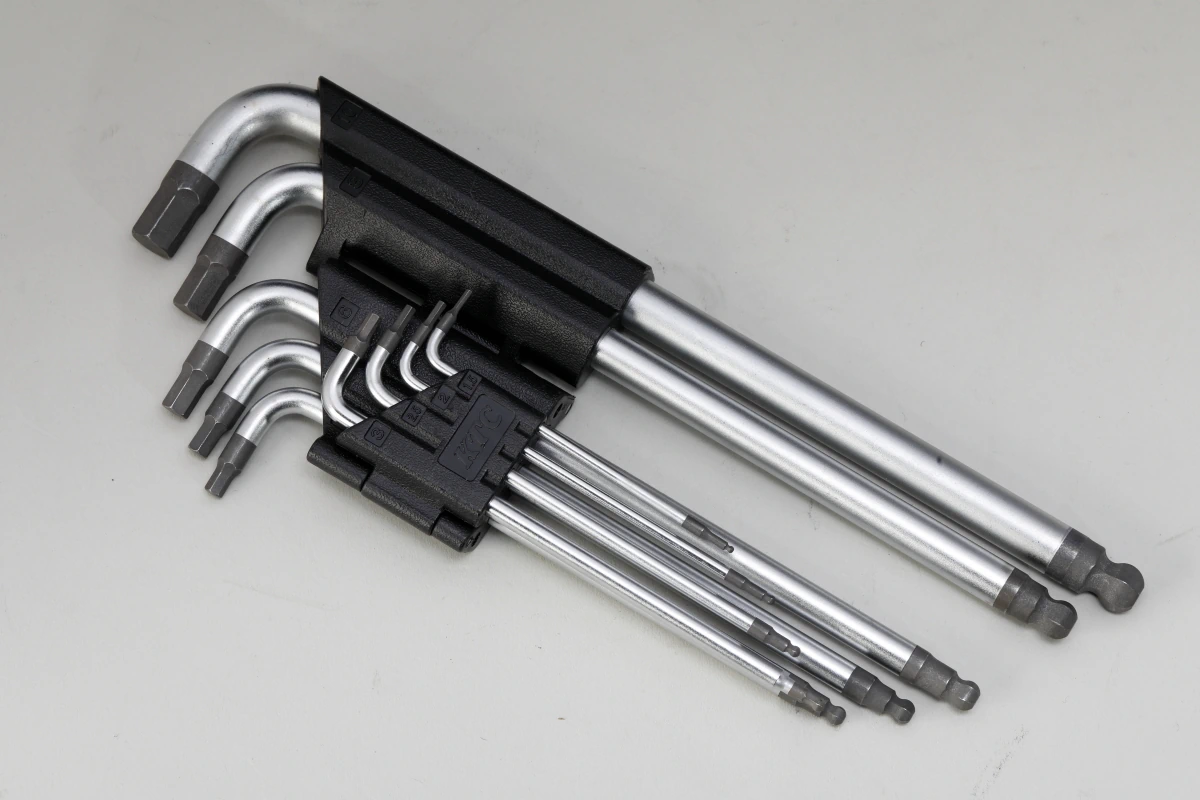

This L-shaped wrench symbolizes the hexagonal wrench. Some wrenches are manufactured entirely from hexagonal bars including the shaft, but this KTC wrench features a round shaft. The round shaft makes it difficult to bend when a large torque is applied, and the square part does not bite into the fingers even when the wrench is strongly gripped.
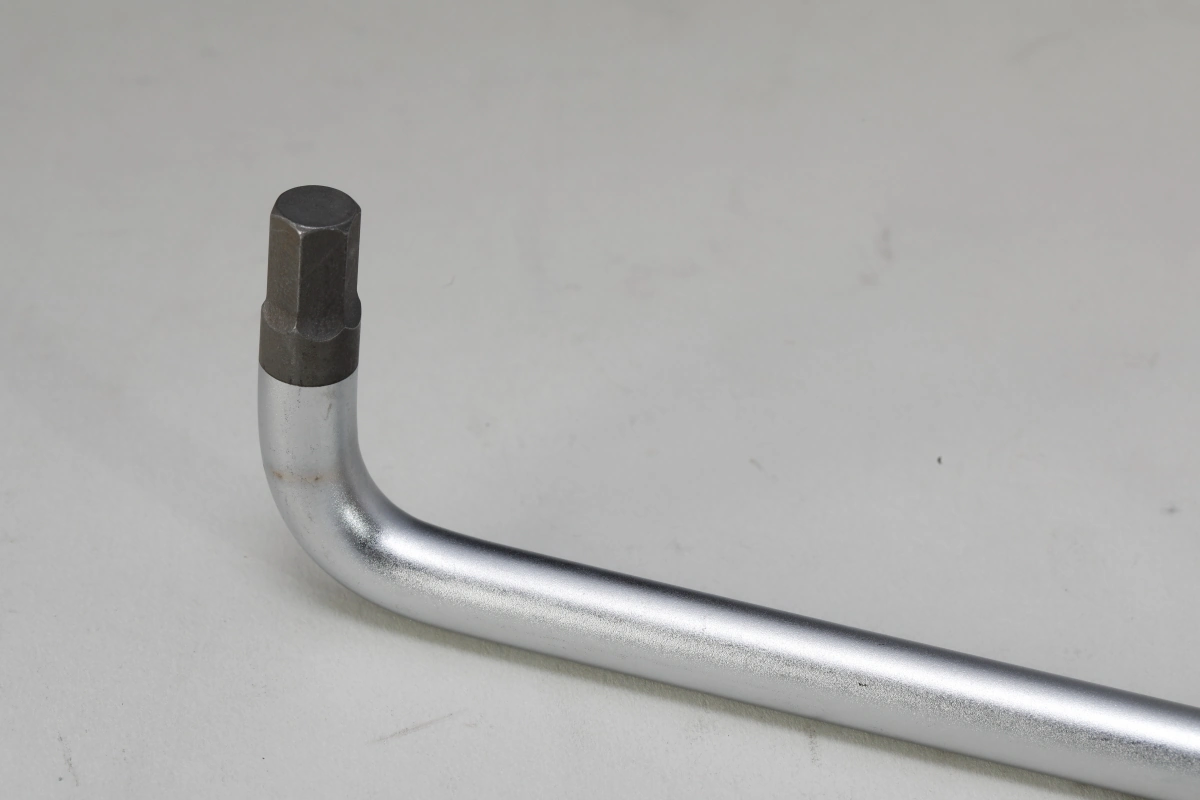

In many cases, the tip of the short shaft side has a straight structure instead of a ball point so that it can be used to loosen or tighten a tightly tight bolt. It is said that the reason why surface treatment is not applied to the tip of the hexagonal part is to avoid dimensional changes caused by surface treatment such as plating.
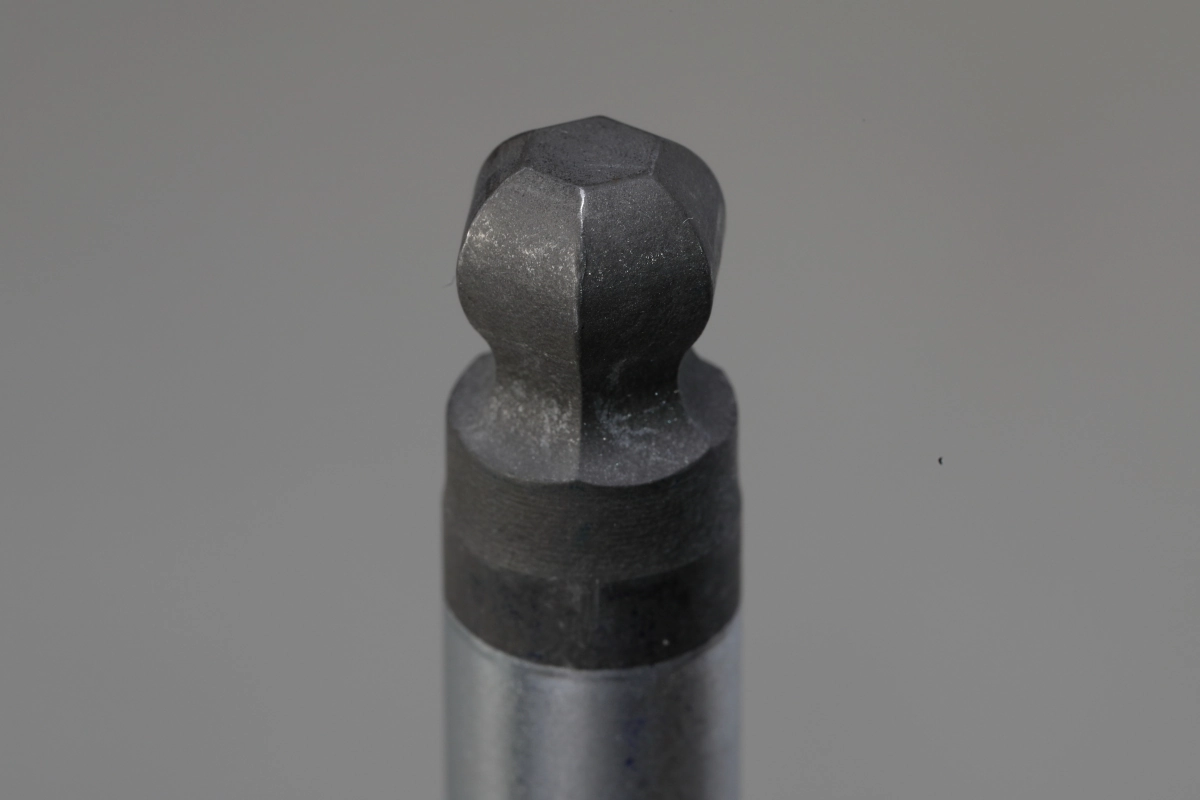

Ballpoint wrenches have a tapered tip so that the wrench does not come off the hexagonal hole even when the wrench shaft is tilted and remains in contact with the hexagonal hole at six points. This allows the wrench to rotate smoothly even when the wrench is tilted. However, the strength of the tapered part is lower, so it should only be used for quick turning and temporary tightening.


Multi-angle balled wrench made by PB Swiss Tools, famous for its screwdrivers. The ballpoint on the long axis side is a common shape, but the short axis side is unique.
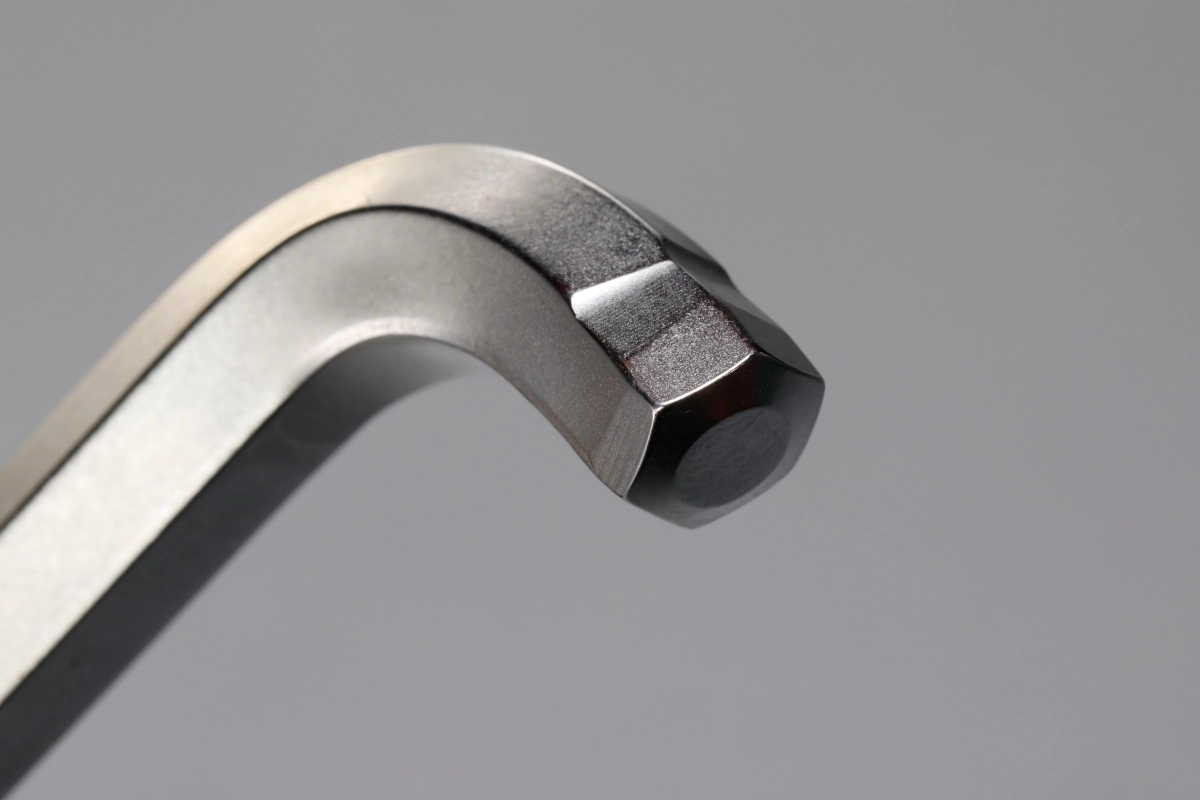

There is a slight notch near the tip of the short axis, which allows the tip inserted into the hexagonal hole to tilt slightly.
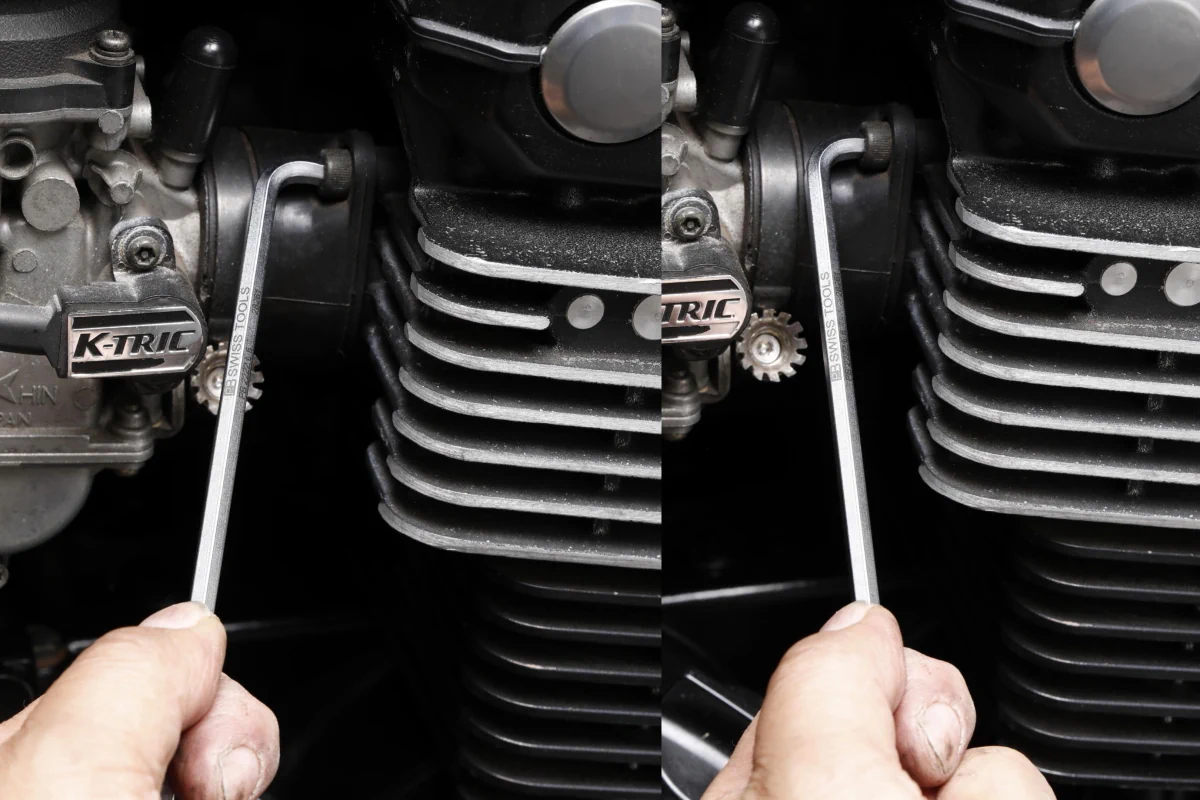

As can be seen by comparing the two images, the bolt can be turned at an angle of 90 to 100°.
The flexible head is not a big nub like a ballpoint, so it can be used for tightening work. When you want to give the wrench just a little bit of relief, you may tilt the shaft to make the insertion into the hexagonal hole shallower, but this will cause the hexagonal hole to be nicked if you overdo it.
This wrench, which has a clearance from the start, is much easier to use in tight spaces.
The L-shape wrench, which can apply a large amount of torque when held by the long shaft and can be turned quickly without interfering with the surroundings when held by the short shaft, can be found in many tool stores and is a synonym for hexagonal wrenches, which can be found in any tool set. When purchasing an L-shape wrench, we recommend the ball-point type with a rounded tip on the long-axis side. Just as it is important not to tilt the tool when turning a hexagonal head bolt with a wrench or eyeglass wrench, it is important to insert the hexagonal wrench deep into the hexagonal hole when turning a cap bolt.
However, depending on the installation position of the bolt, the wrench shaft may get in the way, limiting the swing angle and forcing the wrench to be replaced several times. In such cases, a ball-point wrench can be inserted into the bolt and tilted so that it can continuously turn the bolt without having to be replaced, thereby improving work efficiency.
However, the ballpoint is not as strong as a straight hexagonal shaft because of the neck near the tip, so it is not suitable for loosening or tightening a tight bolt. The ballpoint is on the long shaft side because the short shaft side is used as a handle to physically prevent large torque from being applied.
Therefore, in order to gain tightening torque on the ballpoint side, the short shaft should not be extended by hanging a spectacle wrench or the like on the short shaft.
The flexible head wrenches of PB Swiss Tools, famous for its screwdrivers, have an angle adjustment function on the short axis side with a unique tip shape, although not as large as the ballpoint. The tip of this wrench is not as distinct as the ballpoint, but has a slightly concave shape and can be tilted only 10° from a right angle to 100°, thereby creating a workspace in tight spaces and allowing tightening. Although it is modest compared to the 30° tilt of the ballpoint on the long axis side, there are many situations in which the wrench could escape a little more during actual maintenance work.
In such a case, this PB wrench will show its strength.
There is a rescue bit that bites into the collapsed hex hole.
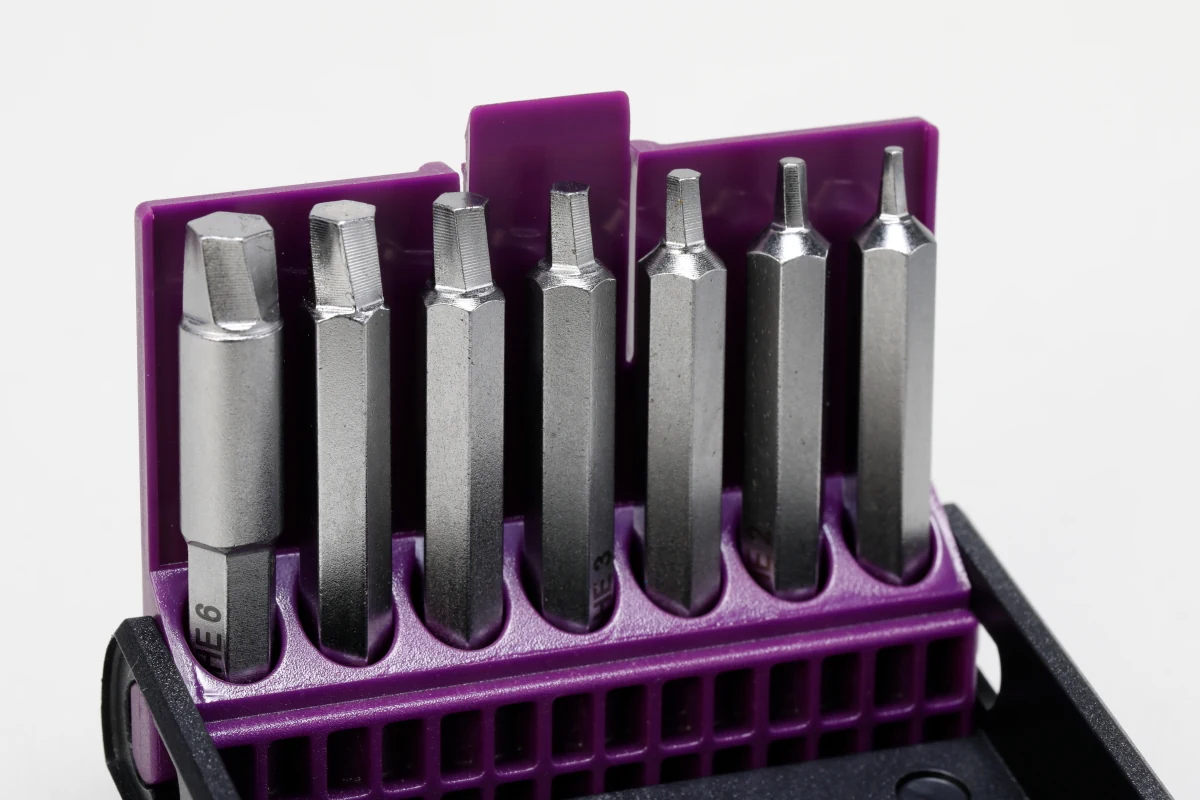

Reverse tap for cap bolts sold at Straight, a tool store. While a typical reverse tap is designed like a left-hand threaded tapping screw, this tap is designed with a unique head section that bites into the lapped hexagonal hole.
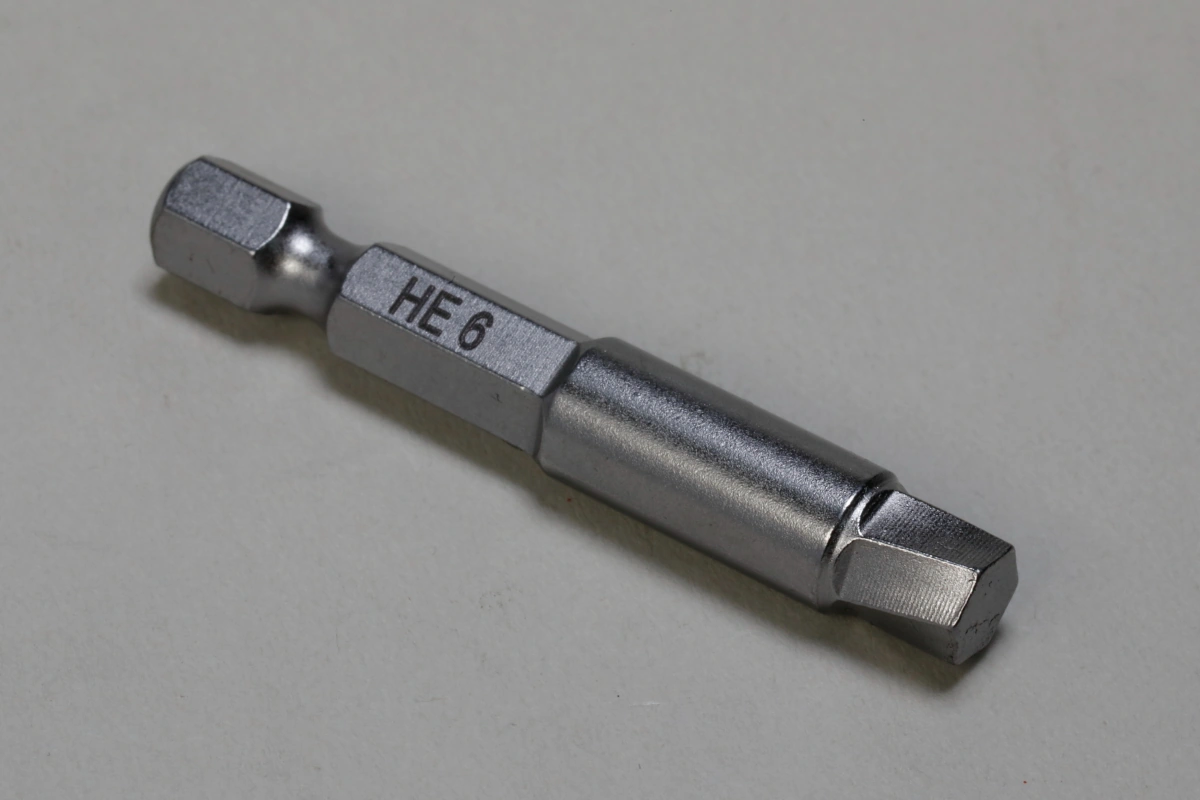

To loosen a cap bolt with a lapped hexagonal hole, it is effective to bite the edge of the reverse tap vigorously. For this reason, the insert is shaped like a hexagonal bit with a 1/4″ diagonal so that it can be attached to an electric impact wrench.
The hexagonal hole of the cap bolt and the hexagonal wrench always make contact at six points, making it difficult to lick. However, repeated insertion and removal of the cap bolt or attempts to turn it with the wrench inserted too shallowly can cause the hexagonal corner to lick and the wrench to spin around. Inserting a wrench with rust or dirt stuck in the hexagonal hole can also cause damage. In such cases, you want to utilize a reverse tap for cap bolts. The taps sold by Straight, a tool store, have a twist at the tip to bite into the tapped hexagonal hole. The tap can be attached to electric impact wrenches by using a 1/4-inch hex bit shape for the insertion part and can loosen the cap bolt at once by applying a strong impact.
If there is room around the cap bolt, it may be possible to loosen it by gripping the outer circumference of the head with locking pliers or similar tools. However, as mentioned earlier, cap bolts can be installed in tight spaces, so it is not uncommon to not be able to grip the outside of the cap bolt. In such cases, a bit that bites into the lacerated hexagonal hole will be effective.